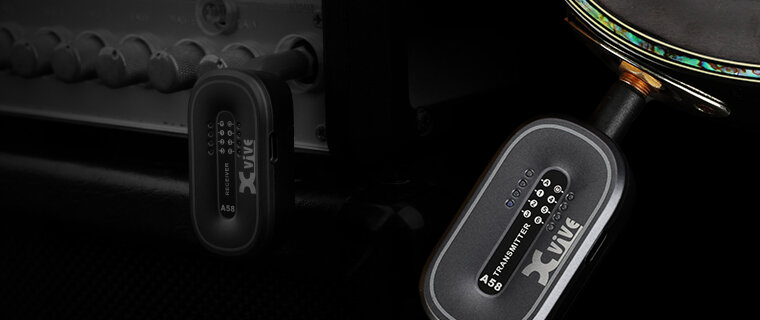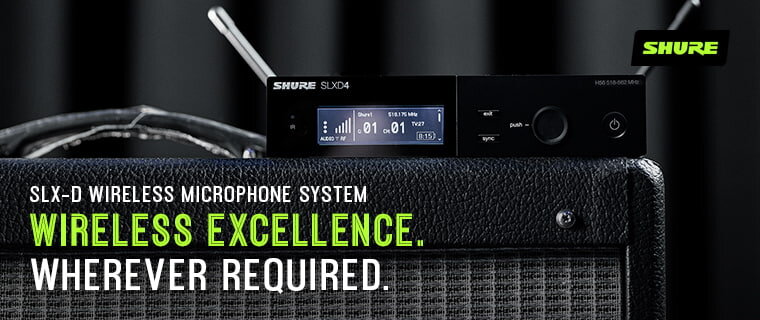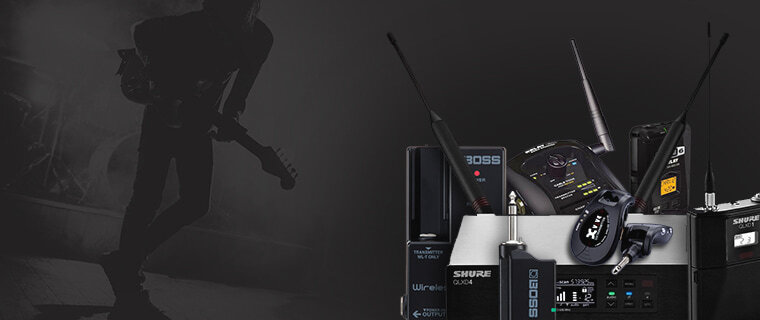Customer Kudos
"zZounds may be the greatest thing to happen to me honestly. I built my entire studio with their help, and could never thank them enough. I am nearing 50 years old, and never had the chance to do it for myself, til a few years ago, when I discovered zZounds. I now have the ability to play synths, guitars, drums, you name it. Make payments, set up home studio, make your dreams come true. And its all thanks to zZounds!!"
Search Results
-

Shure GLXD16+ Digital Wireless Guitar Pedal System
Slap the Shure GLXD16+ wireless guitar system on your pedalboard and enjoy untethered freedom. Dual-band 2.4 and 5.8 GHz operation means less interference.
$499.00
- 8 x$62.38
- No Credit Check6 x$83.17
-

Xvive U2 Digital Wireless Guitar System
Smallest, easiest, coolest guitar wireless rig ever! The Xvive U2's rechargeable transmitter and receiver automatically pair up for a hassle-free experience.
-
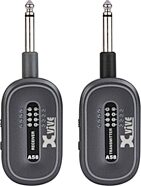
Xvive A58 Digital 5.8 GHz Wireless Guitar System
Operating on the less-crowded 5.8 GHz band, the Xvive A58 wireless system lets you go cord-free without dropouts. Compatible with active and passive pickups.
$149.00
- No Credit Check6 x$24.83
-

NUX C-5RC 5.8 GHz Wireless Guitar System
Wireless frequency bands are getting busy -- beat the crowd by switching to the NUX C-5RC, a guitar wireless system that operates on the 5.8 GHz band.
-
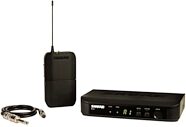
Shure BLX14 Wireless Guitar System
Budget-friendly UHF wireless from Shure! The BLX bodypack gives you up to 14 hours of battery life, and the receiver features QuickScan frequency selection.
$299.00
- 8 x$37.38
- No Credit Check6 x$49.83
-
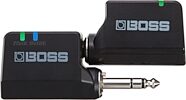
Boss WL-20 Wireless Instrument System (with Cable Tone Simulation)
The Boss WL-20 grants the freedom of a wireless rig with no bulky bodypack! Just plug the transmitter in your guitar, and the receiver into an amp or pedal.
$179.99
- No Credit Check6 x$30.00
-
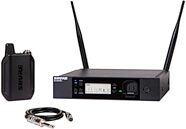
Shure GLXD14R+ Digital Wireless Guitar System
Step up your guitar wireless! Running at 2.4 and 5.8 GHz for a stable signal, this Shure GLX-D+ set includes a rackmount receiver and a 12-hour battery pack.
$599.00
- 12 x$49.92
- No Credit Check6 x$99.83
-

Shure BLX14R Wireless Guitar System
This affordable wireless guitar system gives you a rack-mountable receiver, QuickScan frequency selection and the BLX1 bodypack transmitter's 300-foot range.
$379.00
- 8 x$47.38
- No Credit Check6 x$63.17
-
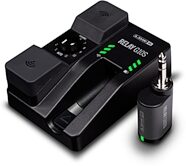
Line 6 Relay G10S Guitar Wireless System with G10TII Transmitter
Line 6's wireless rig is better than ever -- with the G10TII plug-on transmitter for up to 7 hours of playing time, and a receiver made for your pedalboard.
$269.99
- No Credit Check6 x$45.00
-

NUX B-8 Guitar Wireless System (with Tuner)
With a tuner built into the pedalboard receiver, a tiny rechargeable transmitter, and cable tone simulation, NUX's B-8 wireless system is made for gigging.
$319.00
- 8 x$39.88
- No Credit Check6 x$53.17
-

Sennheiser EW-D Ci1 Instrument Set Wireless System
Get digital UHF wireless onstage without breaking the bank. The Sennheiser Evolution Ci1 wireless instrument system provides reliable, low-noise performance.
$629.00
- 12 x$52.42
- No Credit Check6 x$104.83
-
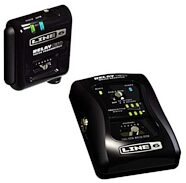
Line 6 Relay G30 Digital Wireless Guitar System
Break free from your amp and pedalboard -- and rock out without tripping over your cable -- with the low-profile Relay G30 digital wireless guitar system.
$229.99
- No Credit Check6 x$38.33
-
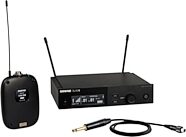
Shure SLXD14 Guitar Wireless System
Step up to rock-solid digital UHF wireless for your guitar or bass. This Shure SLX-D system includes the SLXD4 receiver and SLXD1 bodypack transmitter.
$649.00
- 12 x$54.08
- No Credit Check6 x$108.17
-

NUX B-5RC Guitar Wireless System
Great for all types of guitar, bass, and even ukulele, the NUX B-5RC system gives you clean, usable, wireless guitar signal even if you have active pickups.
-
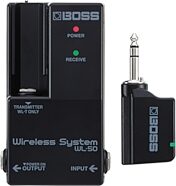
Boss WL-50 Wireless Pedal Board System
Boss makes going wireless easy! Set the WL-50 dock in your pedalboard, plug the transmitter into your guitar, and hone your sound with selectable cable tone.
-
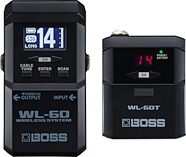
Boss WL-60 Guitar Wireless System
Get a high-quality, no-hassle wireless system. The Boss WL-60 has low latency and high dynamic range, preserving your guitar's natural attack and sustain.
-

Sennheiser XSW-2 Ci1 Wireless Instrument System
Get a guitar/bass wireless system you can rely on! Sennheiser's XSW 2 Ci1 set includes a cable, bodypack transmitter, and rugged metal-housed XS 2 receiver.
$399.00
- 8 x$49.88
- No Credit Check6 x$66.50
-

Boss WL-20L Wireless Instrument System (Flat Response, No Cable Tone Simulation)
Boss's WL-20L wireless system provides the same simple functionality of the WL-20, but without the cable tone emulation for a true flat response.
$199.99
- No Credit Check6 x$33.33
-
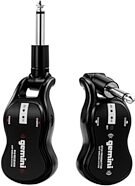
Gemini GMU-G100 UHF Wireless Guitar System
Get rid of your guitar cable and go wireless! Gemini pairs the reliability of a UHF system with the ease of a plug-on rechargeable transmitter/receiver.
-

Shure GLXD14+ Digital Wireless Guitar System
Rock onstage confidently and cable-free with the Shure GLXD14+, an easy-to-set-up digital guitar wireless system with reliable Dual Band technology.
$499.00
- 8 x$62.38
- No Credit Check6 x$83.17
Every wireless system includes three main components: the input source, the wireless transmitter, and a wireless receiver. In the typical wireless guitar rig, the input source is, of course, your guitar or bass. Your instrument feeds an audio signal to the wireless transmitter, which is typically a battery-powered bodypack or beltpack about the size of a deck of playing cards (with a flexible antenna attached), clipped onto your guitar strap at the lower bout of your guitar. A short cable connects your guitar's 1/4" output jack to the bodypack transmitter's input, and the transmitter converts your guitar's audio signal to an FM radio signal, so it can be sent over the air to the wireless receiver. Magic!
Since the wireless transmitter is attached to the guitar or worn by the guitarist, it needs to be small, lightweight, unobtrusive, and tough enough to withstand your stage antics. Some guitar wireless systems employ a very compact "plug-on" transmitter which plugs directly into the guitar's output jack, eliminating the need for that short cable and bodypack. Another advantage of a plug-on transmitter: moving your transmitter from one guitar to another is as quick and easy as plugging in a cable, and there's no need to untangle the bodypack from your strap!
After the transmitter, the final key component of your wireless guitar rig is the wireless receiver, which receives the RF (radio frequency) signal from the transmitter, and outputs your audio signal that's ready for processing and amplification. The receiver unit can be mounted in your pedalboard, in your effects rack, on top of your amp, or at the mixing console. The most common type of wireless receivers are half-rack-sized units with an antenna or two sticking out from the back, but some wireless systems have receivers made specifically for guitarists and bassists that are designed to mount in a pedalboard, and can be powered by the pedalboard itself. If you use any effects pedals (or even just a tuner pedal) on stage, a "guitar pedal receiver" is a convenient choice for your wireless rig.
When shopping for a guitar wireless system, you'll encounter the age-old question: Analog or digital? Both have their merits. Analog wireless systems use time-tested radio technology to deliver high-quality audio with zero to negligible latency, since analog audio and radio frequency (RF) signals travel at the speed of light. However, analog does have one main drawback: all analog audio wireless systems use a compander circuit to overcome the limited dynamic range and higher noise floor inherent to radio signals.
The word "compander" is a contraction of "compressor" and "expander" -- which describes what happens to your audio signal in these wireless systems. For example, if your guitar's audio output has a dynamic range of 100 mm, and the FM radio signal that carries it only has 50 dB of dynamic range to work with, the signal must be compressed 2:1 on the transmitting end, then expanded 1:2 on the receiving end. This "companding" process works on the same principle as the noise-reduction technology that Dolby developed for analog tape recording and playback, half a century ago. While companding is relatively imperceptible in a good-quality analog wireless system, it can lead to audible artifacts like "pumping," "breathing," or a general "flattening" of dynamics that guitarists lovingly refer to as "tone suck." You may experience this when going wireless for the first time with a lower-quality analog wireless rig.
In a digital wireless system, there's no need for that compander circuit, because the analog audio is converted to to a digital signal that modulates the radio carrier signal in discrete steps -- ones and zeros. With digital modulation, your audio signal is unaffected by the RF link, since the wireless receiver only "hears" the ones and zeros. The result: Digital wireless systems deliver exceptionally clear, transparent audio, with broad, flat frequency response and greater dynamic range (which is great for guitar anad bass.)
Digital does have one very slight drawback: latency. Because digital wireless systems require an analog-to-digital conversion on the transmitter end, and a digital-to-analog conversion at the receiver end, they add latency -- or lag time -- to the signal. Latency refers to the delay, usually measured in milliseconds, between when an audio signal enters a system, and when it emerges. For example, most Bluetooth audio systems have noticeable latency. Digital latency isn't confined to wireless technology -- it's also familiar hurdle in the modern digital recording studio, where 32 milliseconds of latency is generally considered acceptable. Most high-quality digital wireless systems keep latency under 5 ms, which is completely unnoticeable to most players and listeners. Remember, sound travels at 332 meters per second, which means if you're standing 10 feet away from your stack, you're already hearing about 9 or 10 milliseconds of delay -- so another few milliseconds of latency from your digital wireless rig shouldn't be a problem!
